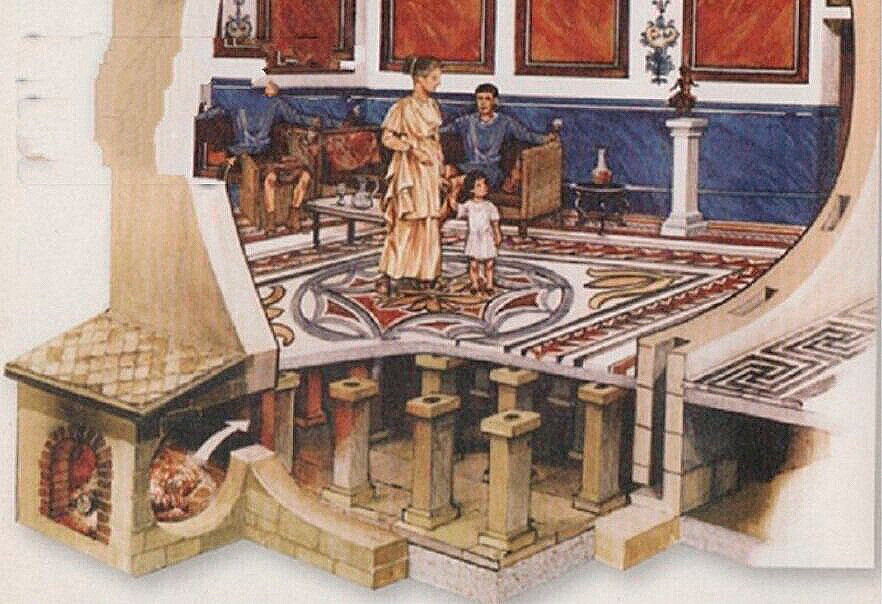From 7000 BC they built cylindrical houses with flat or vaulted roofs, at the top of which was an opening.
On the floor, directly under the opening, was the fireplace. These houses had no interior walls, so the heat was transferred from the main fireplace to the entire building.
Strange as it may sound, underfloor heating was invented before the radiator. The first is a discovery of the Minoans, the second of the Romans. In the royal rooms of Knossos there were pipes under the floor through which hot water flowed and warmed the rooms.
The ancient city was excavated by Evans in 1900, and this means that the Sweden M. Trivald, who introduced underfloor heating in 1716 like its present form, did not know how it worked there.
The rich Romans didn't know about underfloor heating either. They used the "hypocaust": they lit fires in their cellars and sent hot air through open ducts running through the walls and heated the rooms.
The Byzantines used the "kilns" to heat the baths of their palaces. Modern central heating had to wait until the end of the 19th century, when oil and electricity came into use.
The first patent for an oil burner was not granted until 1885, but oil-based central heating did not catch on until 1930. This was preceded by the invention of the thermostat. Before that, houses were heated with electric heaters, an invention of the American Will Hadaway.











